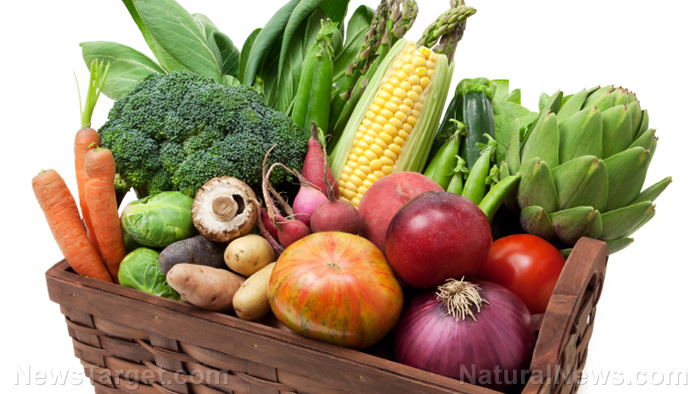Scientists turn food scraps into construction material stronger than concrete
06/03/2021 / By Divina Ramirez

It turns out, scraps from fruits and vegetables make for durable building products.
Japanese researchers from the University of Tokyo discovered how to turn food waste into robust construction materials that retain their edible nature. Vacuum-dried, pulverized seaweed, cabbage leaves and orange, onion, pumpkin and banana peels were used to make materials that were at least as strong as concrete.
The researchers borrowed the “heat pressing” concept, which is used to make construction materials from wood powder. But instead of pulverized wood, they used pulverized food scraps as the constituent powder. They mixed the food powder with water and seasonings, then pressed the mixture into a mold. They “baked” it at a high temperature, then tested the bending strength of the resulting materials.
The researchers also assessed the appearance, taste and smell of the resulting materials.
Yuya Sakai, the senior author of the study, said their goal was to use seaweed, a staple in Japan, and other common food scraps to construct materials that were at least as strong as concrete.
Sakai said they were also interested in determining whether the recycling process impacted the flavor of the food scraps or not.
Kota Machida, a senior collaborator, said all of the resulting materials except for the pumpkin-based specimen exceeded their bending strength target. In addition, they found that Chinese cabbage leaves produced a construction material that was more than three times stronger than concrete.
The cabbage-based material could be mixed with the weaker pumpkin-based material for better reinforcement, added Machida.
Plus, the new construction materials retained their edible nature. Though the addition of salt and sugar enhanced their taste, the seasonings didn’t reduce their strength.
The materials also resisted rot, fungi and insects. Their appearance and taste saw no changes even after exposure to air for four months.
The work will be published in the proceedings of The 70th Annual Meeting of The Society of Materials Science, Japan as “Development of Novel Construction Material from Food Waste.”
Food scraps turned construction materials
Food waste is a global financial burden and environmental concern. It’s estimated that 30–40 percent of foods produced worldwide are wasted per year. That means each person wastes up to 20 pounds of food each month. In 2010, experts found that the worth of food wasted amounted to $161 billion in the United States alone.
The issue is worse on a global scale. Recent figures show that about $1 trillion worth of food is wasted per year. Therefore, it’s important to figure out how to reuse food scraps.
Using food scraps to create materials that are strong enough for construction projects but are still edible opens the door to a wide range of creative applications, the University of Tokyo said in a press release.
The development of potentially munchable materials is still premature. That said, humans might one day construct a shelter or building that they can simply eat when it is no longer needed.
How to recycle food scraps
Scientists have a long way to go before they can start building skyscrapers out of food scraps. But that does not mean you should forego saving and recycling your food scraps at home. (Related: Waste not, want not: 10 ways to reduce food waste.)
Here are a few ways you can recycle your food scraps:
- Save a scrap bag in the freezer
- Roast potato peels
- Roast apple peels
- Use citrus peels to infuse flavor into foods and drinks
- Turn melon rinds into pickles
- Toss herb stems into sauces, marinades and stocks
Learn more about how food waste can be reused to make construction materials at FoodScience.news.
Sources include:
Tagged Under: breakthrough, construction materials, discoveries, environment, food science, Food scraps, food waste, future science, Good science, innovation, recycling, research
RECENT NEWS & ARTICLES
COPYRIGHT © 2017 FUTURE SCIENCE NEWS





















